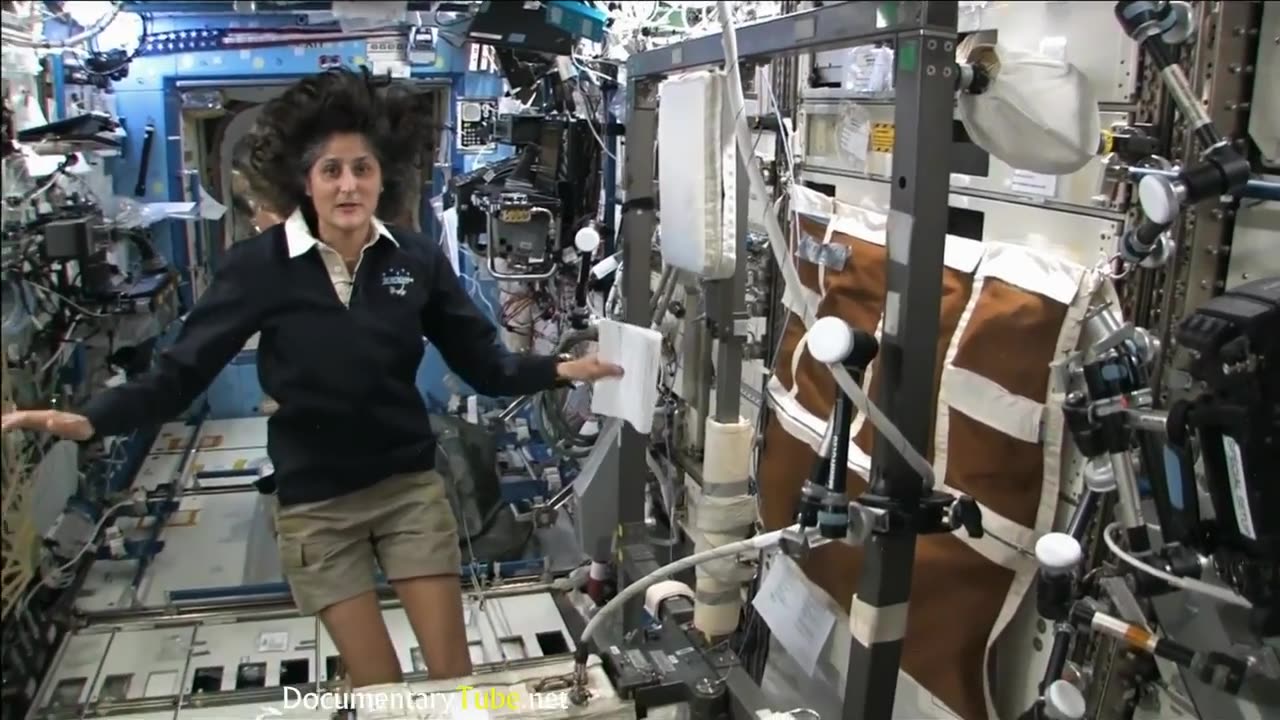Premium Only Content

HOW IT WORKS_ The International Space Station - Shortcut
The International Space Station (ISS) is a cutting-edge space laboratory and research facility that orbits the Earth, providing invaluable insights into space exploration, science, and international collaboration. It works by:
Orbital Path: The ISS orbits the Earth at an altitude of approximately 420 kilometers (260 miles), traveling at a speed of about 28,000 kilometers per hour (17,500 miles per hour).
Modular Structure: The ISS is composed of multiple interconnected modules, laboratories, and living quarters, allowing astronauts to conduct scientific experiments and live in space for extended periods.
International Collaboration: It's a testament to international cooperation, with multiple space agencies, including NASA (USA), Roscosmos (Russia), ESA (Europe), JAXA (Japan), and CSA (Canada), contributing hardware, resources, and astronauts.
Microgravity Research: The ISS provides a microgravity environment that allows scientists to conduct experiments not possible on Earth, leading to breakthroughs in biology, physics, and materials science.
Earth Observation: It offers a unique vantage point for studying our planet, aiding in weather monitoring, environmental research, and disaster management.
Human Spaceflight: Astronauts aboard the ISS conduct research on the effects of long-duration spaceflight on the human body, helping prepare for future missions to the Moon and Mars.
Resupply Missions: Regular resupply missions deliver food, equipment, and scientific instruments to the ISS, ensuring its functionality.
Continuous Operation: The ISS has been continuously inhabited since November 2000, hosting astronauts from various countries, fostering international cooperation in space exploration.
In summary, the ISS serves as a platform for scientific research, international collaboration, and the advancement of our understanding of space and our own planet-
-
 1:47:35
1:47:35
Right Side Broadcasting Network
6 hours agoLIVE REPLAY: President Trump Delivers Remarks on Making Health Technology Great Again - 7/30/25
48.4K18 -
 38:23
38:23
Members Club
2 hours ago $0.11 earnedShooter Strikes NYC, WNBA Wig Meltdown, and Sweeney’s Jeans Go Viral - MC05
2.73K4 -
 33:41
33:41
The Finance Hub
4 hours ago $0.49 earnedBREAKING: NANCY PELOSI JUST GOT HIT WITH A MAJOR BOMBSHELL!!!
5.59K4 -
 LIVE
LIVE
LFA TV
21 hours agoLFA TV ALL DAY STREAM - WEDNESDAY 7/30/25
1,063 watching -
 2:04:14
2:04:14
Pop Culture Crisis
3 hours agoOprah Tsunami BACKLASH, Billie Eilish RACIST? Joey Swoll BENDS THE KNEE | Ep. 888
22.3K7 -
 1:22:25
1:22:25
The HotSeat
2 hours agoLibs Are BIG Mad Over New Commercials and The Fed Is Just Another Political Weapon
15.4K8 -
 1:53:09
1:53:09
Film Threat
7 hours agoSAN DIEGO COMIC-CON! FANTASTIC FALL OUT FOR MARVEL | Hollywood on the Rocks
8.82K1 -
![[Ep 717] NEVER Apologize to The Counterculture Mob! Be You, Be True | Oprah & “Elites” God Complex](https://1a-1791.com/video/fww1/81/s8/1/-/G/X/6/-GX6y.0kob.1-small-Ep-717-NEVER-Apologize-to-T.jpg) LIVE
LIVE
The Nunn Report - w/ Dan Nunn
3 hours ago[Ep 717] NEVER Apologize to The Counterculture Mob! Be You, Be True | Oprah & “Elites” God Complex
49 watching -
 1:38:10
1:38:10
The Quartering
4 hours agoKash Patel "Discovers" Secret FBI Files On Trump, NYC Shooter New Conspiracy, Planned Parenthood
131K25 -
 56:56
56:56
Crypto Power Hour
5 hours ago $1.38 earnedSmart Contracts On The Blockchain
18.5K9